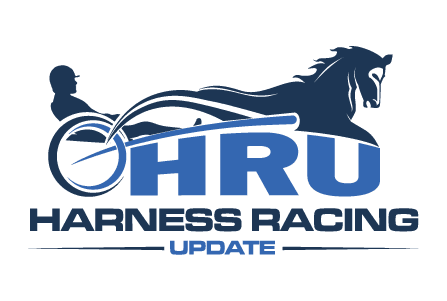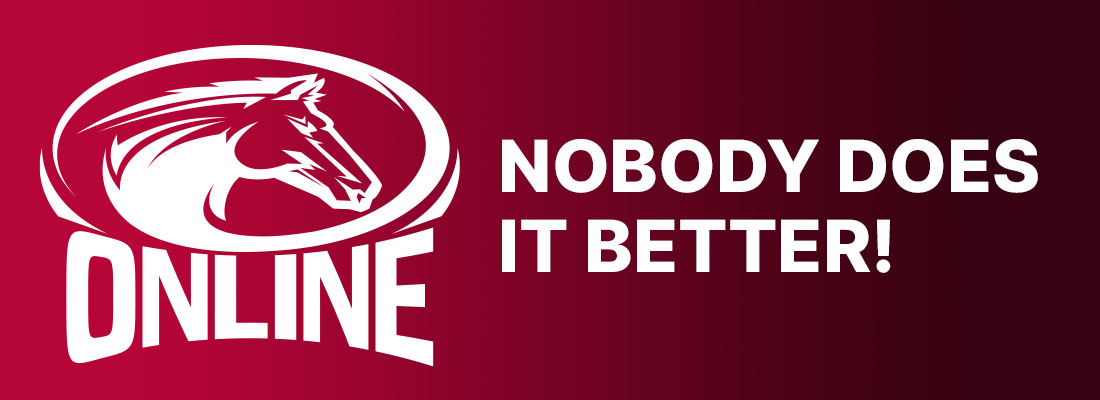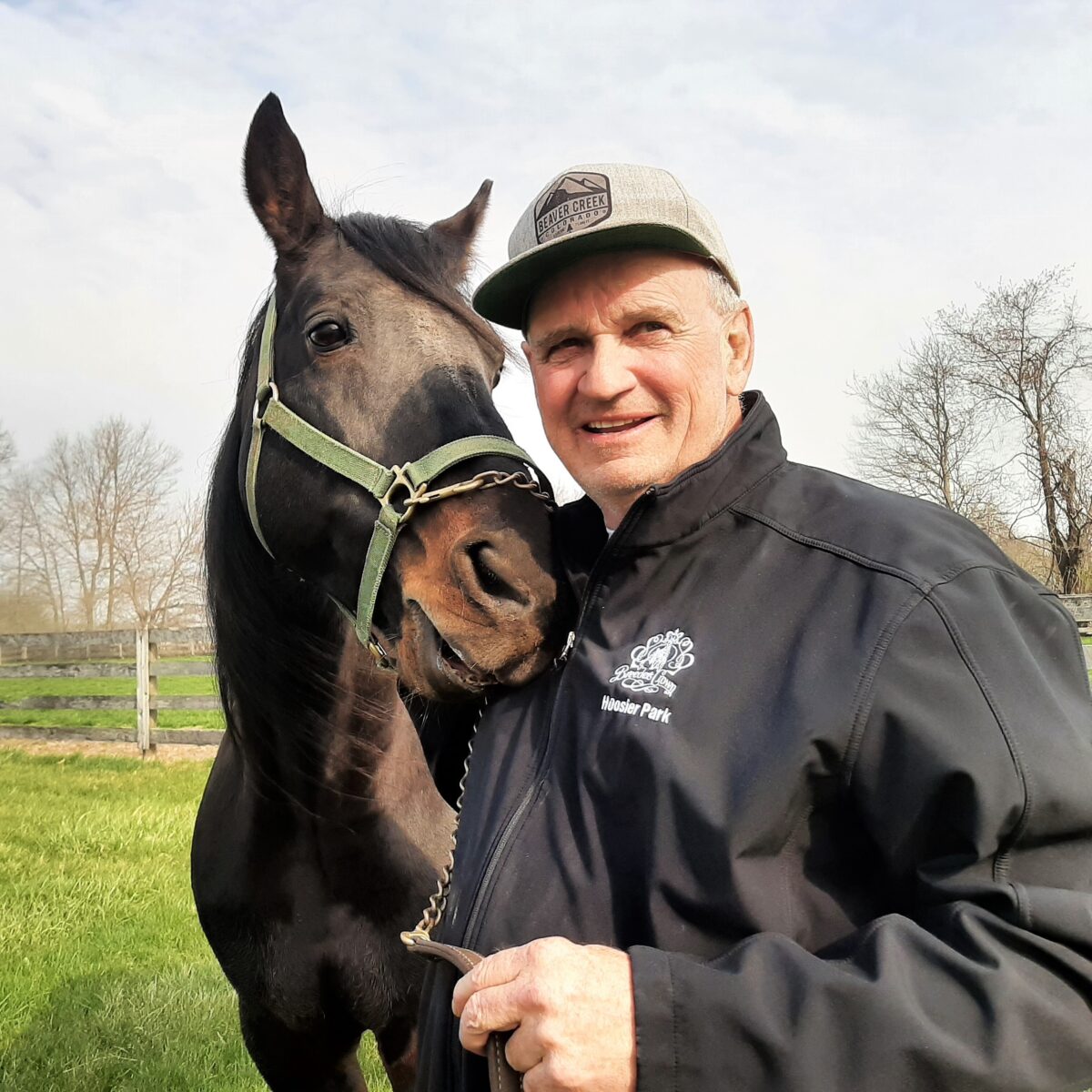How asking Billy Haughton for a job changed Ernie Gaskin’s life
The Indiana Horse Racing Association Hall of Famer had a memorable career both working for Haughton and after.
by Murray Brown
In 1974, at the age of 19, Ernie Gaskin and his best friend Steve Birchard embarked on a road trip to Florida which would determine the rest of Gaskin’s life.
“We were two kids from northern Vermont who were looking, first, to escape the terribly cold winters and perhaps secondly a means to sustain ourselves in Florida which was our destination,” Gaskin said.
Steve’s dad was a horseman who raced at Saratoga. I had worked around the horses there, but I was nowhere near immersed in the work and culture of harness racing as I was about to be. We arrived at Pompano Park and knocked on the door of the office of the W. R. Haughton stable. We said we were looking for work. We were immediately assigned to big Dick Vaughn’s branch of the huge Haughton operation.
“Back then, the stable had somewhere in the area of 200 head in training in Florida. I’m guessing that there were probably eight to 10 segments of the stable each headed by an assistant trainer.
“Of course, Bill Haughton was in charge of the entire enterprise. I don’t know how he did it, but he knew every single horse under his command. To those caretakers who think that they may have it tough today, with five, six or even as many as seven horses to take care of, I’ll let you in on a secret — you do.
“Back then, each groom had two horses. If their horse was good enough, he had only that one.
“In retrospect, what a great life we had. We were part of what I believe was the greatest collection of people and horses ever assembled. Harness racing, and more specifically Pompano Park, was flourishing. Our two horses kept us busy, but not that busy. We had plenty of time to enjoy all that winters in sunny Florida had to offer.”
Thus began your tenure with Billy Haughton, the man I believe to be the greatest all-around horseman and the most remarkable human being that I’ve ever known. Would you concur?
“Undoubtedly. Billy Haughton was not only a great horseman, perhaps the greatest ever, but in addition, was perhaps as great a people person as there ever was. He was fantastic with everyone. It mattered not if you were one of the many employees in his stable, an owner of one or many horses, or a member of the press — yes, back then we even had a press corps who covered harness racing — looking for information, Billy always had time for you. I don›t know how he managed to put it all into a 24-hour day, but he certainly did and he did it exceptionally well. I suspect that part of the reason was that whenever he had a few minutes to spare he was able to take his famous cat naps. Here he would be, appearing totally exhausted. His eyes would close and he’d doze off for 10-to-20 minutes. He’d then awake fresh as a daisy looking to do and doing whatever had to be done.”
Weren’t you with Billy for only a few years when he told you that he was going to make you a trainer?
“Yes. One day he told me that he wanted me to begin training. I was surprised. I told him that I didn’t know anything about training horses. His response was, ‘I know that. I’m going to teach you. You are going to learn while working on the job.’ I began training and kind of rose through the ranks where not only did I become one of the division heads, but I also was allowed to communicate with many owners in the stable. What a remarkable group of owners they were. People like Lou Guida, Max Hempt, Bob Key, the Froehlichs, Arnold Bachner, Dave McDuffee, Tom Walsh, Tom Murphy and numerous others immediately come to mind. They all loved Billy and he knew them all and got along with all of them.”
Probably the one horse and owner you were best known for was Nihilator and his primary owner Lou Guida. What can you tell us about Guida?
“Lou Guida was an owner whose type the sport had never before seen. He was an innovator. He brought investors with untold millions into the sport. He, together with Bob Boni, came up with the plan to buy a group of the best-bred yearlings from the first crop by Niatross. Actually, I think it was Bob’s idea which he took to Mr. Guida. Lou loved the idea. He was always receptive to something innovative. Bob had researched the group of colts by Niatross in that first crop. He suggested to Guida that they try to privately purchase a group of the best ones. He then hit the road to look at all the individuals. They ended up buying seven of them for a total of $875,000. They actually tried to buy eight. They had offered $125,000 for an eighth colt named Handsome Sum. They were turned down because the owner felt $125,000 wasn’t enough. They ended up buying that same colt at Tattersalls in the Fall for just $92,000.
“The plan was to distribute these colts to some of the top stables in the country. We were fortunate enough to land Nihilator [$3,226,263] and Pershing Square [$812,277] the two yearlings who were destined to become the two best among that group. The others were Flight Of Fire [$262,111], Port Stanley [$194,399], Cruncher [$159,593], Social Welfare [$14,018], and Wall Street Whiz [$3,488], plus the aforementioned Handsome Sum [$281,193]. That amazing crop of colts that year also included Dragons Lair, Falcon Seelster, Chairmanoftheboard and Broadway Express.”
What can you tell us about Nihilator?
“He was exceptional right from the beginning. I remember first looking at him. Man was I impressed. He was big and strong with this big ass like the washer women. He showed ability right from the get-go. You were always aware of his power just by sitting behind him. I remember Dean Hoffman doing a story for Hoof Beats magazine on the first crop by Niatross in training. He came to our stable. I remember showing him Nihilator and Pershing Square. I said something to the effect that I’d be very surprised if Nihilator didn’t turn out to become a great horse. In training, he was special from the very start.
“Billy always wanted his sets of 2-year-olds to finish together at the wire. He would generally group his sets so that they were what we thought of as near equal ability. We couldn’t do it with Nihilator. As soon as you would chirp to him or take him out of a hole, he’d immediately open up on the other colts in the set. He was just so darned precocious. I’ve never been around a colt, before or since, who impressed me more.”
You mentioned something related to John Simpson, that struck a chord with me. Simpson was a firm believer in letting 2-year-olds do what nature intended them to do. Did you know he was strongly opposed to having any vet work other than normal procedures done with 2-year-olds in training?
“Mr. Simpson had sent us a full sister to Dragons Lair to train. Her name was Sanrema Hanover. She was one of my group. One morning Billy hollered to me that John Simpson was on the line. I picked up the phone. We talked about the filly. One thing I remembered him saying was that he didn’t want to tell me how to train her. That was entirely up to me. However, he said that if I felt that at any time she needed any veterinary treatment, to put her on the first truck heading to Hanover.”
Am I correct that you were with the Haughton operation until 1990?
“We had lost both Billy and Peter. ‘The Circus,’ as we called the operation, was beginning to wind down. I had made many friends and contacts on the road during my years with the ‘Green Wave.’ I was approached by Howard Peterson who owned Viking Meadows Farm in Carmel, IN. He asked me to come work for him. It was probably time for a change. This would be a clean break. I’d be leaving the Haughton operation, but there would be no hard feelings. I wouldn’t be taking any horses or owners with me.”
Didn’t you eventually go on your own?
“In 1994, I bought a piece of land called Crimson Lane Farm in Anderson, IN. It was rather unique, especially for Indiana at that time. It was to be a combination training center and stallion station. The idea of standing stallions was criticized, but thank goodness we did. The income from the horses we stood kept us in the black for years. The land area wasn’t near large enough to board mares as found at most breeding farms. With the advent of pari-mutuel racing at Hoosier Park harness racing in Indiana really took off. The stable grew. We now have 20 head in training, all of which I am a full- or part-time owner.”
Aren’t you also involved politically in Indiana?
“I like to believe that I’ve played at least a small part in the institution and growth of harness racing in Indiana. In addition to owning and training a group of Indiana-bred horses each year I’ve also been involved in the Indiana program from before it even started. I believed, then and now, it was and is important to educate the politicians on the importance of horse racing, especially on its importance to the state’s economy.
“I played a part in getting Purdue University to do an economic study on horse racing in the state. I believe that went a long way towards allowing us to become more involved with the sport. We’ve always aligned ourselves with all segments of the horse economy, specifically the thoroughbred and quarter horse people to present a united front when dealing with the state legislature. I also serve as an advisor to the state’s racing commission.
“In another area, I’ve been privileged to have been accepted as a director of the Hambletonian Society. In my wildest expectations, never did I believe that this kid from rural Vermont would be seated among this sport’s most august group of individuals.”

















